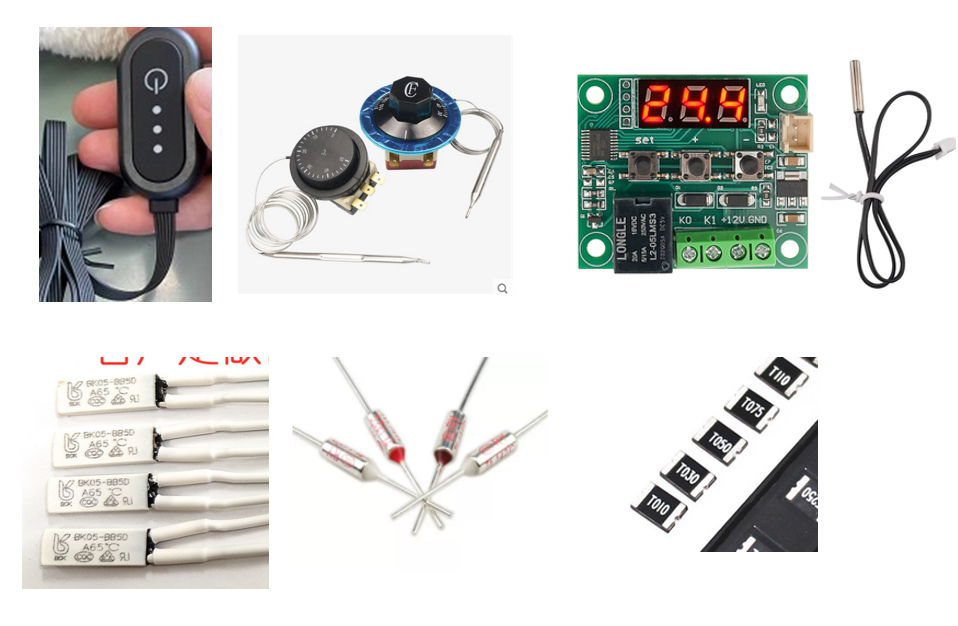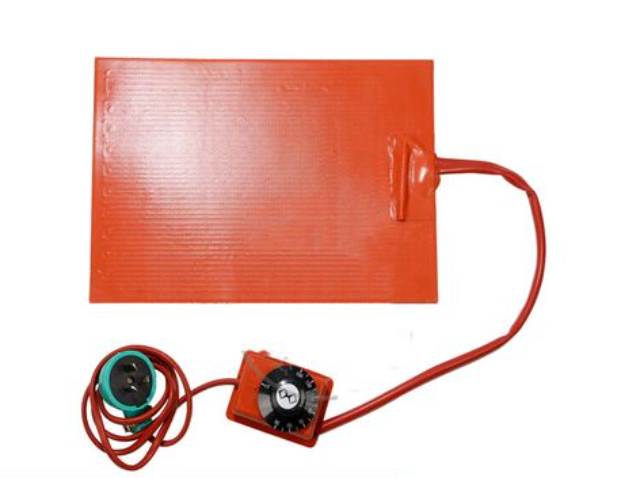A thermostat switch for electric heater is more than just a small control component—it’s the brain of your heating system. Whether used in PI film heaters, silicone rubber heating pads, or custom flexible heaters, a thermostat determines how efficiently and safely the system operates.
Different thermostat types provide varying control accuracy, safety levels, and costs. Some use simple mechanical switches to regulate temperature automatically, while others employ advanced sensors or digital controllers for precise adjustment. Choosing the right control method depends on your product’s temperature stability needs, environmental conditions, and cost expectations.
A thermostat switch is an automatic temperature controller that cuts off power when the heater reaches a preset temperature and reconnects when it cools down. It maintains the desired temperature range without requiring manual operation or mainboard control.
In flexible heaters like silicone or PI film heaters, this switch can be soldered directly onto the heating layer. Once the target temperature is achieved, the circuit opens and stops heating. When the temperature drops below the threshold, the circuit closes again, restarting the heater.
This automatic cycling helps keep the temperature consistent while preventing overheating. Thermostat switches are simple, cost-effective, and reliable, making them ideal for compact heating applications, industrial equipment, or personal heating devices.

A thermostat switch operates based on thermal expansion or resistance change. Inside the switch, a bimetallic disc or sensor element reacts to heat. When the temperature rises beyond the rated limit, the disc deforms, breaking the circuit and cutting power.
Once the temperature decreases to the lower threshold, the disc returns to its original position, reconnecting the circuit and restarting the heater.
For example, a thermostat switch rated at 70°C off / 50°C on will maintain a working temperature roughly within that range. The actual tolerance varies: typically ±15°C for activation and ±5°C for cut-off. Though this margin seems wide, it is acceptable for many general heating applications where ultra-precision is unnecessary.
There are four main types of temperature control methods used in electric heaters:
1. Fixed Thermostat Switch (Mechanical Type)
This is the most common and economical form of thermostat. It comes pre-calibrated with a set temperature range. For example, a 70°C off / 50°C on switch automatically maintains heating between these limits.
Advantages:
Limitations:
This type is widely used in defogging mirrors, seat heaters, or small equipment that only need basic thermal regulation.
An adjustable thermostat offers fine temperature control using sensors like thermistors or K-type thermocouples. These sensors detect real-time temperature changes and send feedback to a control unit, which adjusts the heating output accordingly.
Advantages:
Some units feature digital displays, LED indicators, or rotary knobs for user-friendly adjustments. Though more expensive than fixed types, their accuracy and reliability make them essential for high-performance equipment such as medical devices, battery warmers, laboratory instruments, and aerospace systems.
In this design, temperature is adjusted by changing the resistance value or the power output of the heater. Typically, a multi-level switch controls different heating stages:
Advantages:
This approach doesn’t offer fine temperature accuracy but provides a practical and affordable solution for general-purpose heating products such as foot warmers or hand warmers.

In high-safety applications, especially where constant operation is required, relying on one thermostat might not be enough. A thermal fuse is often added for secondary protection in case the main thermostat fails.
There are two types:
Dual protection is common in industrial heating systems, automotive seat heaters, and medical devices, where overheating can cause serious safety risks.
Selecting the correct thermostat depends on several factors:
1. Operating Temperature Range:
Determine the maximum and minimum working temperatures required for your application.
2. Accuracy Requirements:
If precise control is necessary (e.g., ±1°C), choose an adjustable digital thermostat. For general heating, a fixed switch is sufficient.
3. Load Capacity:
Ensure the thermostat’s rated current and voltage match the heater’s specifications.
4. Environmental Conditions:
Consider humidity, vibration, and space limitations. Some thermostats are sealed for waterproof or dustproof protection.
5. Safety Standards:
For critical systems, add secondary protection like fuses or circuit breakers.
A professional manufacturer like Danyu Electronics can help you match the right thermostat to your custom heater design, ensuring performance and safety under all conditions.

In flexible heaters, temperature control directly impacts longevity, efficiency, and safety. Silicone rubber heaters and PI film heaters are both thin, efficient, and capable of fast heat transfer, but without proper temperature regulation, they can overheat or degrade prematurely.
A stable thermostat system:
This is especially vital in precision equipment such as medical analyzers, battery warming pads, and aerospace devices, where even a small temperature deviation can affect performance.
As a leading manufacturer in the PCB and flexible heater industry, Danyu Electronics provides customized heating solutions with integrated thermostat control. Our engineering team can help design, assemble, and test heater systems with the most suitable temperature control components.
Our strengths include:
Whether you need a fixed-temperature silicone heating pad or an adjustable thermostat-integrated PI heater, Danyu Electronics provides the expertise and reliability to bring your design to life.
1. What is the typical temperature range of a thermostat switch for heaters?
Most thermostat switches operate between 30°C and 120°C, but custom versions can reach up to 250°C for silicone or PI heaters.
2. Can I use a thermostat switch without a controller board?
Yes. Fixed thermostat switches can directly control the heating circuit without a mainboard, offering automatic on/off functionality.
3. How accurate is a thermostat switch compared to a digital thermostat?
A mechanical switch typically has ±5°C to ±15°C tolerance, while a digital thermostat can maintain ±1°C precision.
4. What is the best thermostat type for medical or laboratory heaters?
Adjustable digital thermostats with thermistor or K-type thermocouple sensors provide the most stable control for high-precision environments.
5. Why does Danyu Electronics stand out in heater design and manufacturing?
Danyu Electronics combines advanced materials, professional engineering, and strict quality management to deliver safe, high-performance custom heating systems with integrated thermostat control.
Simply drop your email or phone number in the contact form, and we'll promptly reply you shortly.